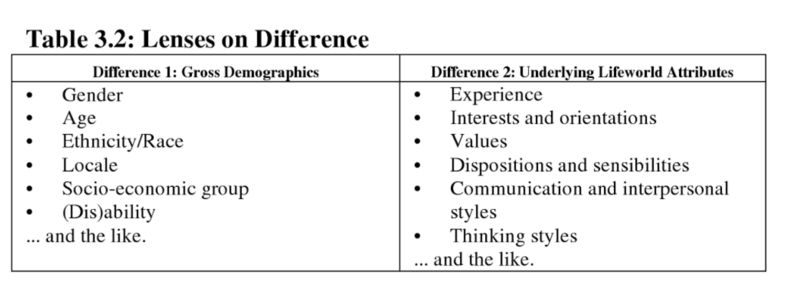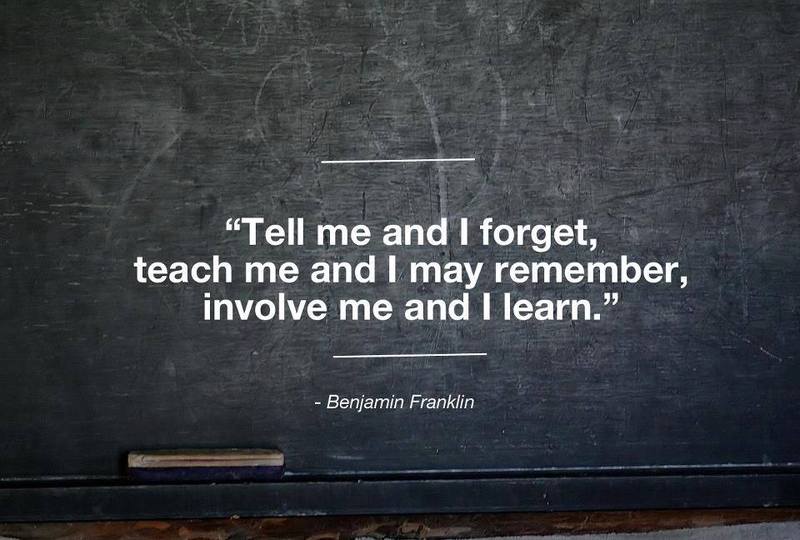e-Learning Ecologies MOOC’s Updates
Learner diversity: Learning by Design – a pedagogical approach
Learning by Design is an approach to learning that has arisen from the changes in society and the economy, the potential for new forms of communication and rising expectations among learners that education will maximize their potential for personal fulfillment and access to work. The new information and communication technologies and globalisation have brought much diversity in people’s lives. Classrooms are thus filled with learner’s whose informal learning resources and life experiences are extremely varied. (Cope and Kalantzis 2005, p. ix)
Unless learning engages with the specifics of individual and group identities it will not be productive. Learner differences should be measured and taken into account both in terms of the dimensions of ‘gross demographics’ and the more subtle and variable ‘lifeworld attributes’. If the difference between lifeworld and learning is too great, the educational effort will be misdirected, compromised or ineffectual. If there is no distance between lifeworld and what is to be learned, learning will be diminished or illusionary. (Cope and Kalantzis 2005, p.50)
Learning is a journey away from the learner’s comfort zone, leaving the relative narrowness and limitations of the life world. As much as learning needs to affirm identity and create a sense of belonging, it is also a process of travelling away from the familiar, everyday world of experience. This journey is one of personal and cultural transformation.
These, then, according to Cope and Kalantzis, are the two conditions of learning in a context of deep and multifaceted diversity:
Condition 1: Effective learning engages the learner’s identity. It builds on the learner’s knowledge, experiences, interests and motivation. In any learning community, there is a great deal of diversity, and this is because the everyday lifeworlds from which students come are always varied. A pedagogy of BELONGING brings this diversity into the classroom, values it and uses it as a resource for learning.
Condition 2: Effective learning takes the learner on a journey into new and unfamiliar terrains. However, for learning to occur the journey into the unfamiliar needs to stay with a zone of intelligibility and safety. At each step, it needs to travel just the right distance from the learner’s lifeworld starting point. A pedagogy of TRANSFORMATION takes learners out of their comfort zones, as a result of which they form new frames of understanding, ways of meaning, capacities to act and expressions of identity.
One of the objectives of Learning by Design is to cater more effectively to learner diversity, by translating lesson plans and student-accessible learning designs which can be accessed by individuals or groups, and undertaken autonomously or semi-autonomously and asynchronously, in the classroom or anywhere beyond the classroom; also allowing that more than one curriculum module (i.e. in the form of more than one Learning Element) might be undertaken simultaneously by different students at the same time in the same class. (Read more how the Learning by Design approach addresses learner diversity from http://newlearningonline.com/learning-by-design/learner-diversity)
Like we heard Dr. Kalantzis explain in the course video ”the new learning spaces afforded by technologies, does provide us with the affordance, the opportunity to have a group of learners in a space where not all of them have to be tracking the same page, the same task at the same time. It is possible to create learning experiences for individuals and for groups with specific needs and to be, and to be able then to pace either the whole group or to pace the individual, to track an individual or to track the whole class to intervene within that learning process, in order to adjust the instruction, to adjust the data, to adjust the information that the learner has or the class has, in order that they're able to meet their goals.” Collaborative intelligence for teachers in preparing, work and instruction in this space is vital. It does mean for the teacher expanding their instructional repertoires to be able to address all the learners in the classroom and as well as expanding the capacity to work with others to bring in experts through the digital ecologies that might be able to support individual learners.
In similar vein education consultant John McCarthy contemplates in edutopia’s blog ”Differentiation opportunities have evolved due to the variety of social media tools available. No longer are students and teachers limited to resources purchased for the classroom. In the past, limited access placed a hardship on teachers to meet the diverse needs of their students, especially when school resources were limited. In this brave new world, we are fortunate to live and work in an environment where the possibilities are endless for getting students what they need when they need it, and in a format that works best for them.”
References:
Mary Kalantzis and Bill Cope with the learning by design group, Learning by Design, 2005
http://newlearningonline.com/learning-by-design/learner-diversity
https://www.edutopia.org/blog/differentiated-instruction-social-media-tools-john-mccarthy
Image from https://imranyazid.wordpress.com/




Good subject Turunen, I appreciated how clearly you described differentiated learning and learning by design. I agree that no one learns the same task in the same manner and at the same rate. Therefore, differentiated instruction is necessary. Differentiated learning is not a novel concept; it has x trench run existed in education for many years; however, it was extremely difficult to implement. As a result of the proliferation of digital media tools, we can now differentiate learning with less effort and in less time.
Good topic Turunen, I liked how you explicitly explained the concept of differentiated learning and learning by Design. I agree with your point that no one learn the same task in the same way in the same time. That’s why differentiated learning is needed. Differentiated learning is not a new concept though, it was in education for many years; but it was very hard to achieve. Now, with the rise of digital media tools, we can easily differentiate learning with less efforts and time.